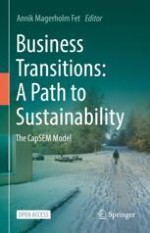20.1 Introduction: The Historical Development of Waste Management
20.2 Waste Management and Circular Economy
20.3 Waste Policies and Regulations
20.4 Municipal Waste Management in the Ålesund Region
Collected at household level (incl. glass and metal packaging) | 230 kg |
Brought to recycling stations (bulky and hazardous waste) | 154 kg |
Total waste production | 384 kg |
Categories | Collected kg per inhabitant 2017 | Collected kg per inhabitant 2019 | Change kg per inhabitant |
|---|---|---|---|
Food waste | 0 | 35 | + 36 |
Paper waste | 39 | 34 | - 5 |
Plastic packaging | 5 | 7 | + 2 |
Glass and metal packaging | 10 | 14 | + 4 |
Residual waste | 182 | 133 | - 49 |
Total collected | 237 | 227 | - 10 |
